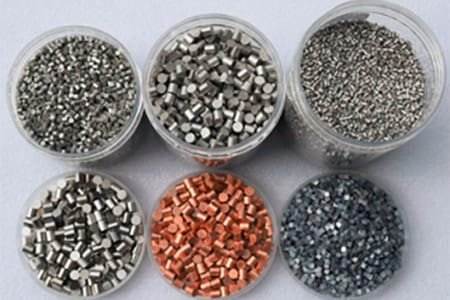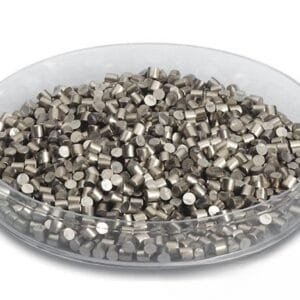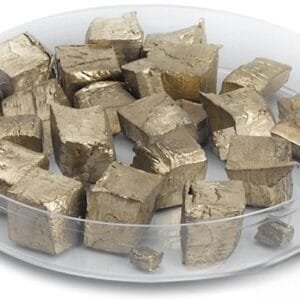TFM offers high-quality Nickel Antimony (NiSb) evaporation material, designed for thin-film deposition in a wide range of advanced applications. Nickel Antimony alloys, typically composed of nickel (Ni) and antimony (Sb), are known for their unique electronic properties, including high electrical conductivity, thermoelectric performance, and enhanced magnetism, making them ideal for sensitive applications in electronics and energy storage.
The evaporation process provides a precise method for depositing Nickel Antimony thin films, which are used in thermoelectric devices, magnetic materials, and semiconductors. Nickel Antimony films are particularly effective in thermoelectric applications, where they can help convert heat to electricity or electricity to heat in devices such as thermoelectric generators and coolers.
In addition, Nickel Antimony films are used in magnetic applications, offering enhanced magnetic permeability and low coercivity properties. This makes them suitable for use in magnetic sensors, memory devices, and inductive components. Nickel Antimony thin films also play an important role in semiconductor devices, especially in p-type doping applications, where their unique electrical characteristics are used to tailor the performance of transistors and diodes.
TFM provides customized Nickel Antimony evaporation materials, ensuring precise control over composition and purity to meet the specific demands of advanced deposition processes. These materials offer excellent evaporation properties, resulting in high-quality, uniform films suitable for cutting-edge applications in electronics, energy harvesting, and magnetic technologies.
Our Nickel Antimony evaporation materials are manufactured to the highest standards, offering consistent performance, high density, and optimized evaporation characteristics. With low impurity levels and superior material quality, TFM’s Nickel Antimony materials are perfect for advanced thin-film applications in industries such as semiconductors, energy storage, and magnetics.


 MSDS File
MSDS File



Reviews
There are no reviews yet.